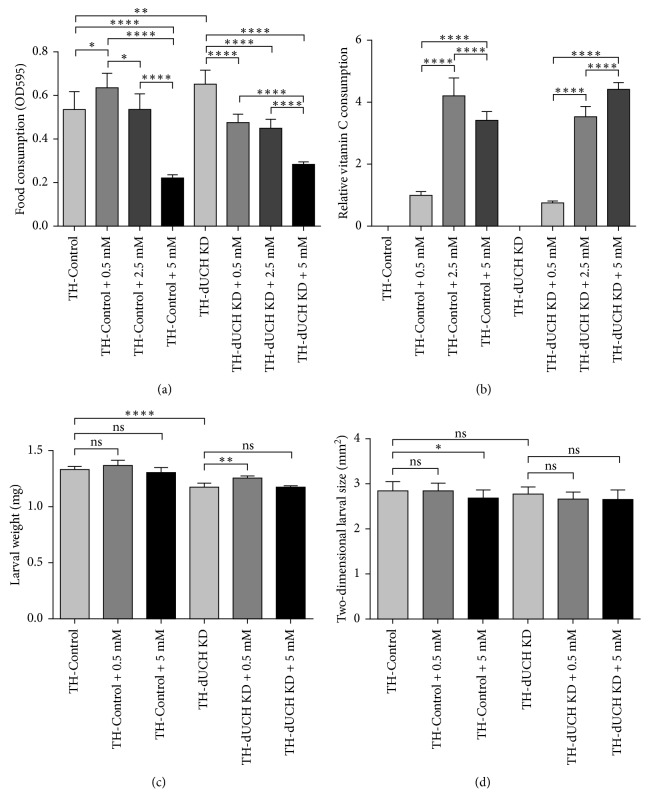Figure 1.
Vitamin C treatment affected the food intake ability of larvae in a dosage-dependent manner. (a) The levels of food intake were impacted by vitamin C treatment. There were changes in food intake ability when control and dUCH knockdown larvae were treated with different concentrations of vitamin C (one-way ANOVA with Tukey's test, ∗ p < 0.05, ∗∗ p < 0.01, and ∗∗∗∗ p < 0.0001, population size N=10 and biological replication n=7, error bars represent the standard deviation of data). (b) The relative levels of vitamin C intake. The differences in relative levels of vitamin C intake were statistically significant (one-way ANOVA with Tukey's test, ∗∗∗∗ p < 0.0001, population size N=10 and biological replication n=7, error bars represent the standard deviation of data). (c) The effects of vitamin C treatment on larval weight. The body weights of control and dUCH knockdown larvae were not reduced by vitamin C treatment (one-way ANOVA with Dunnett's test, ∗∗ p < 0.01 and ∗∗∗∗ p < 0.0001, population size N=8 and biological replication n=5, error bars represent the standard deviation of data). (d) The effects of vitamin C treatment on larval size. The body size of dUCH knockdown larvae were not reduced by vitamin C treatment (one-way ANOVA with Dunnett's test, ∗ p < 0.05, n=15, error bars represent the standard deviation of data). TH-Control (+; +; TH-GAL4/+) and TH-dUCH KD (+; +; TH-GAL4/UAS-dUCH.IR).

